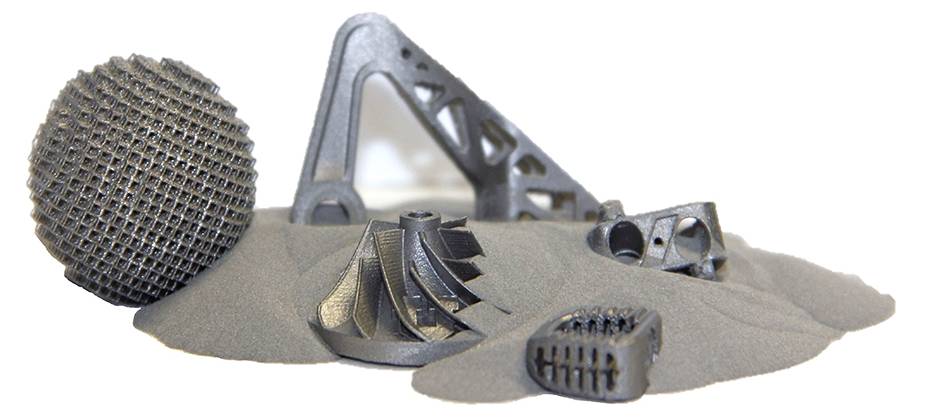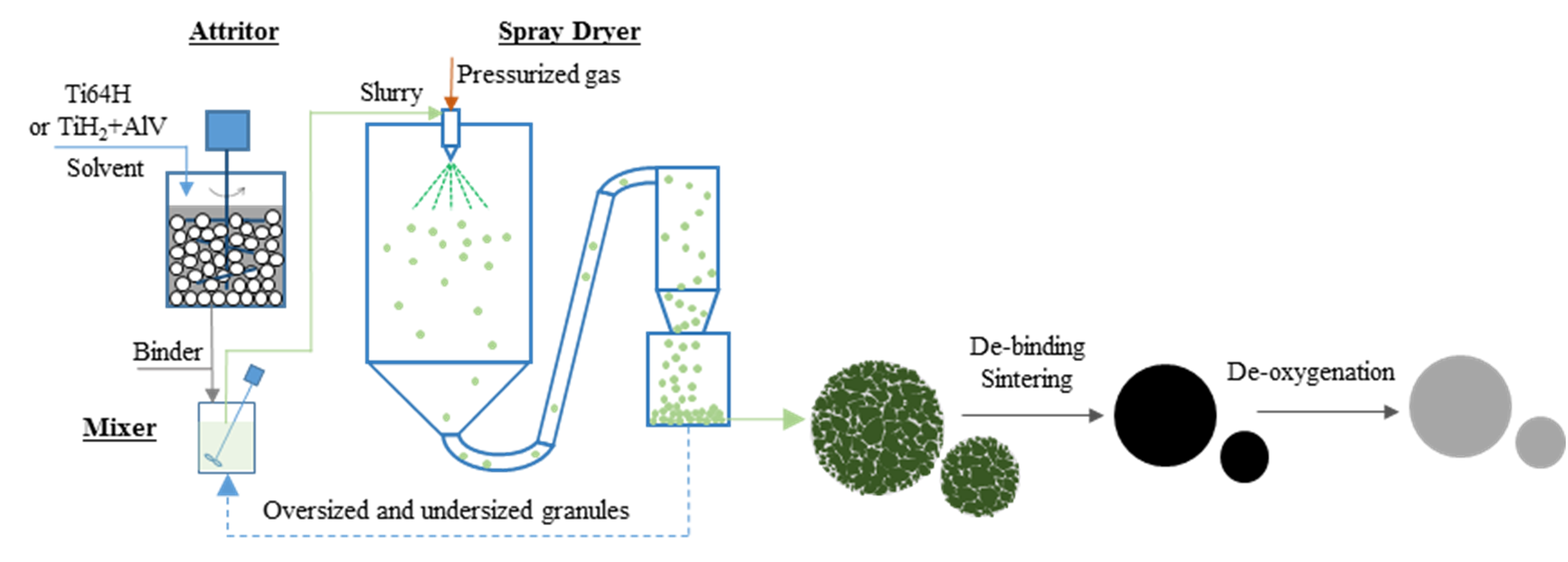An innovative technology for producing low-cost spherical Ti alloy powder: Granulation-Sintering-Deoxygenation (GSD)
A novel spherical Ti powder production method, Granulation-Sinering-Deoxygenation (GSD), was invented and developed by a team led by Prof. Fang for making low-cost spherical titanium and titanium alloy powders in 2015. GSD Ti powders can be used for near-net-shape (NNS) manufacturing methods including additive manufacturing (AM), metal injection molding (MIM) and hot-isostatic-pressing (HIP).

Commercial spherical Ti powder production methods include gas atomization (GA), plasma atomization (PA), and plasma rotating electrode process (PREP). The PREP powder is widely recognized to have very high purity and near perfect spherical shape. However, the particle size of PREP powder is relatively coarser than needed for some applications. Finer spherical powders can be produced via GA and PA methods. Although atomized powder can be classified to produce desired size cuts, classification reduces the yield of usable size cuts, further increasing the cost of the material. The low yield of fine powder produced by the current commercial methods is one of the main technical reasons for the high cost of the powder used for the advanced NNS processes, especially for AM.GSD technology combines low cost feedstock material with high yield production, and can thus produce spherical Ti and Ti alloy powders at a fraction of the cost of comparable commercial powders that are available today. The new process is an integrated process consisting of three main steps: granulation, sintering, and deoxygenation. As shown in the flow chart below, in this process:
- Ti alloy is hydrogenated to make friable hydride first, and then the hydride is milled to fine particles.
- The fine hydride particles are granulated to spherical granules in the desired size range using spray-drying.
- The spherical granules are sintered to obtain densified spherical Ti powder.
- The densified spherical Ti powder is deoxygenated with Mg to reduce oxygen content to meet chemical requirements.
Critical characteristics of spherical Ti powder include particle size and size distributions, flowability, and chemical compositions, especially oxygen content. Most applications require the oxygen content in Ti powder to be less than 0.15 wt.%, in order to meet the oxygen requirement in industrial standards for final manufactured components (< 0.2 wt.%). Owing to its extreme affinity to oxygen, the reduction of oxygen content in Ti has always been a major challenge and a major contributor to the high cost of Ti powder and Ti in general. Ti and Ti alloy powders produced by GSD technology have low oxygen contents. One of the key enabling features of GSD technology is the “deoxygenation” process, which is a breakthrough based on the discovery of an underlying thermodynamic principle. This novel deoxygenation technique assures the oxygen content of the powder to be as low as needed.
References:
Z.Zak Fang et al., Production of Substantially Spherical Metal Powders, US Patent 9,421,612
Ying Zhang et al., Methods of deoxygenating metals having oxygen dissolved therein in a solid solution, US Patent 9,669,464
Pei Sun et al., A Novel Method for Production of Spherical Ti-6Al-4V for Additive Manufacturing, Powder Technology, 301(2016):331-335.
Ying Zhang et al., Thermodynamic destabilization of Ti-O solid solution by H2 and de-oxygenation of Ti using Mg, Journal of the American Chemical Society, 138(2016):6916-6919.
Yang Xia et al., Novel Method for Making Biomedical Segregation-Free Ti-30Ta Alloy Spherical Powder for Additive Manufacturing, JOM, 70 (2018):364-369

